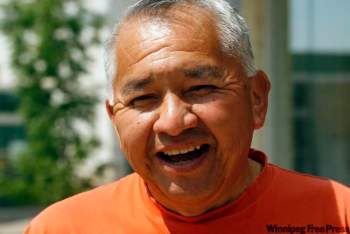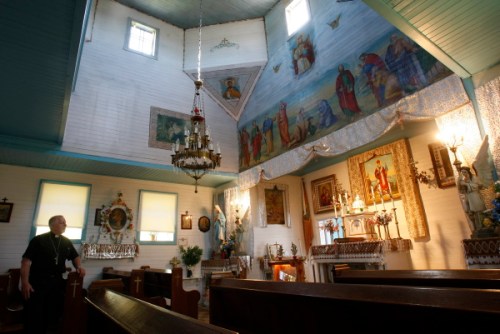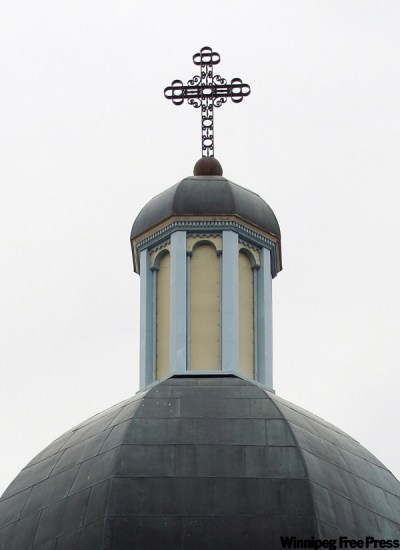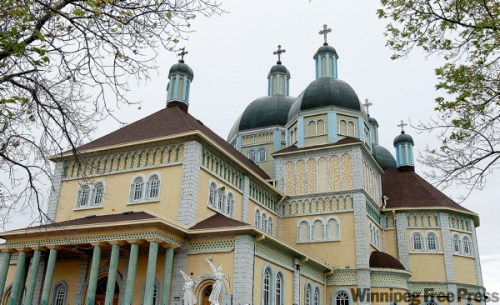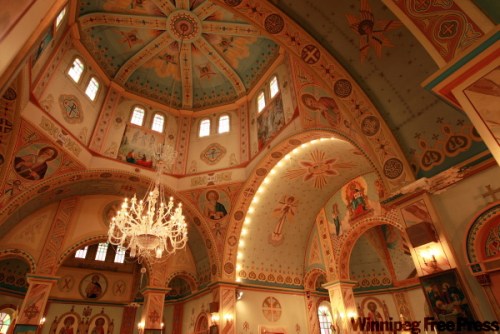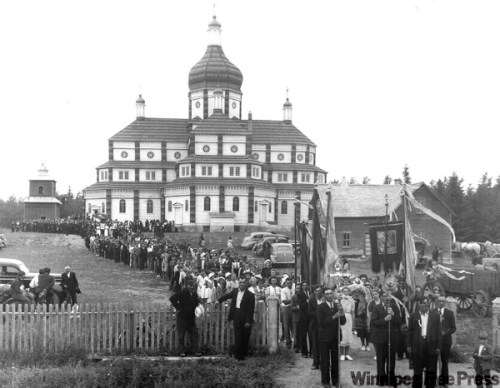Ukrainian Churches in Manitoba
Reunited friends prepare for impact of sharing painful past
4 minute read Thursday, Jun. 17, 2010Only minutes after arriving on the first buses bound for the opening day of the Truth and Reconciliation Commission's first national event, two survivors found each other.
One, wearing a jaunty orange shirt, has been resting on a rock, talking to a writer about energy. There was great energy at The Forks today, he said, loaded with all the weight of the residential school experience. It crackles between people, he says. "Be open to it," he urges. "Please allow room in your normal journalistic methodology for this." His name is Edward Andy, and he is 64 years old.
As a little boy, growing up on the Big Grassy First Nation on the south shore of Lake of the Woods, he would "cry uncontrollably" for his big sister and big brother. "I wanted to be with them," he recalls.
He didn't know being with them would mean shipping off to St. Mary's Roman Catholic School in Kenora, where he spent three years before transferring to a Presbyterian residential school.
Advertisement
Weather
Winnipeg MB
18°C, Cloudy with wind
Churches anchored community
4 minute read Saturday, Nov. 14, 2009YOU can find them all over Manitoba in many different rural communities, built in different shapes and sizes. I'm talking about rural Ukrainian churches. These churches have been landmarks of Ukrainian settlement in Manitoba for more than a century, and with their extensive history, they have come to mean a lot to many people.
The first Ukrainian settlers were enticed to Canada with offers of free land to those who could clear and farm it. They took a huge risk, sold whatever possessions they had in Ukraine and moved to Canada in search of a better life for themselves and their families.
Others arrived later, displaced from their homes by the brutal warfare that ravaged their homes during the Second World War. Some even survived through the horrors of the Holodomor, the man-made faminegenocide of 1932-33 imposed by Joseph Stalin and his Soviet regime.
Ukrainian culture is almost entirely intertwined with religion. Without having a place to practise their faith, Ukrainian settlers would have found it difficult to carry on the Ukrainian culture at all here in Canada. In building these churches, Ukrainian settlers created the foundation of Ukrainian culture in Canada today.
VIDEO: Ukrainian churches anchored community
1 minute read Saturday, Nov. 14, 2009Tymon Melnyk talks about his article on rural churches in Manitoba and his own family history.
Church survival threatened
10 minute read Preview Tuesday, Nov. 17, 2009Tale of two churches
8 minute read Preview Tuesday, Nov. 17, 2009Ukrainian churches: The heart of Manitoba’s heartland
14 minute read Preview Saturday, Nov. 14, 2009Architect Ruh’s reputation has grown with time
2 minute read Preview Tuesday, Nov. 17, 2009IN PICTURES: Manitoba’s Ukrainian churches
1 minute read Preview Saturday, Nov. 14, 2009LOAD MORE


